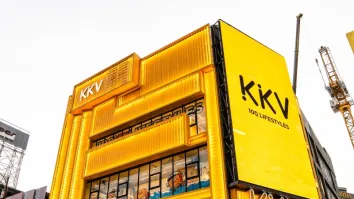
Anson Bailey on key e-commerce trends that will influence businesses in Hong Kong
With consumer digital fluency levels rising higher, the new era of retail is just beginning, says KPMG’s Head of Technology and Consumer & Retail.
Anson joined KPMG in Hong Kong in 1999 and is currently a Partner based in the Hong Kong office heading up the Consumer & Retail Practice in the ASPAC region. He is part of the KPMG Global Consumer & Retail Steering Group as well as being a member of the Global Technology Innovation Centre and the Cluster Leader for the Technology, Media & Telecoms Practice based in Hong Kong.
As one of the judges at Retail Asia Awards 2021, Anson believes that the past year has seen the “new normal” become an unavoidable mantra in the retail industry. And while retailers and consumers have been urged — or forced — to take their transactions into the digital marketplace, this “new normal” is just a typical framework that has been happening in Mainland China for years now.
However, what the pandemic did was accelerate the country’s already bustling digital transformation journey. In this interview, Anson shares some of his insights on how this affects China’s retail industry and consumer behaviour. He also discusses the major trends and adjustments that will sustain retail businesses during the crisis.
How can you describe today’s Chinese consumers in the “new normal” setup?
Today’s Chinese consumers want more than just a transactional relationship. They want to connect with the company’s purpose and vision. They are asking big questions surrounding climate and the environment. They want to know what companies are doing to ensure sustainable business practices and positively impact the communities they operate in. The COVID-19 pandemic has been a big wake-up call for many brands to engage more deeply with their customers and to accompany them on each step of the consumer journey.
The new era of retail is just beginning. Consumer attitudes are changing as rapidly as the technology that’s transforming how they shop. So, companies should use this pivotal moment to reassess every aspect of their businesses.
With retailers shifting from a product-centric mindset to a more customer-centric mindset, how can retailers adjust to these changes taking place in the industry?
While Mainland China has consistently embraced new and innovative technologies, Hong Kong has been a relative laggard. This may be because of the region’s compact size, which has fostered a deep culture of brick-and-mortar retail. When an abundance of goods is conveniently around the corner, e-commerce isn’t as appealing as it is in less dense cities. But change was inevitable, and COVID-19 has sharply shifted consumers’ attitudes. With more Hongkongers working from home and being wary of crowded spaces, there has been a big uptick in online purchasing, especially of essentials.
What are the e-commerce trends that will influence retail businesses in Hongkong?
China has the world’s largest digital population, with almost 989 million netizens in December 2020. (Statista, 2021). To cater to consumers with such high levels of digital fluency, retail industry professionals must understand four key ecommerce levels of digital fluency trends that influence businesses throughout Hong Kong and the rest of the Greater Bay Area (GBA).
New consumers
Gen Z (those born after 1997) is dramatically reshaping the consumer landscape in China and there are more than 300 million of them according to the latest census statistics. Gen Z consumers are not just looking for convenience; they want to buy brands that align with their values and that they feel an affinity with.
New brands
Homegrown platform brands such as Alibaba and Tencent continue to grow in popularity amongst the nation’s consumers. Thwarting the stereotype that Chinese shoppers see foreign brands as superior, the new generation is eager to try fresh, local brands.
New consumption
Today’s Chinese retailing is all about digital connections — from shoppable live-streams to omnichannel engagement across numerous social networks. Companies in the country are expanding their content marketing to reach consumers in a new and informed way.
New operations
The meteoric rise in live-streamed e-commerce in China is one of the most interesting and exciting trends. The market size is currently worth about 1 trillion yuan, up from 433.8 billion yuan in 2019. (Statista, 2021)
What are the various digital transformation trends expected in the retail value chain?
With shoppers using apps to buy groceries and videos to buy clothes, it’s more essential than ever that businesses make technological adaptation a core pillar of their strategies.
However, to survive and thrive in this digital age, companies must develop the ability to adopt new technologies that can improve customer connections and service delivery. This digitalisation must transform every part of the business ecosystem, from sourcing and logistics to sales and customer engagement.



















 Advertise
Advertise





